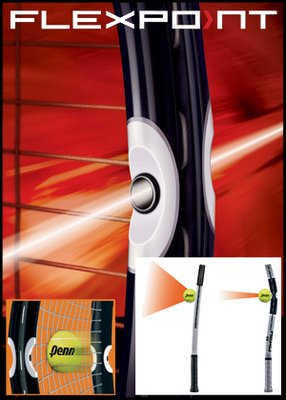Having spent some years in a materials research lab, pushing the boundaries on materials innovation, I can say that the vast majority of advancements in racquet technology year after year are gimmicks. Most "real" R&D take at least 5 years for the results of research to make an impact on actual product, but new technologies in tennis racquets are introduced year after year in the form of exotic materials that are purportedly lighter, stronger, more powerful etc. etc. For those who played in the late 90s, that material was titanium. And yet Ti is neither lighter nor stronger than woven carbon fiber. Racquets that claimed to incorporate Ti were 99.xx% graphite composite, barely enough Ti to make any significant difference. In the early 2000s, Wilson introduced Hypercarbon; this was nothing than a high-modulus graphite composite, similar to Prince's Graphite Extreme, that had been rebranded to incredible success. Around that time, Head, who championed the usage of titanium, introduced Liquidmetal tennis racquets. It was circa 2002-2003, and as a high school senior I thought, "wow, what an incredible material for tennis". Being naive and enamored with tennis gear and racquet tech, I was inspired to study materials science in college. Fast forward 4+ years and I found myself in grad school, joining a research group that specialized in none other than metallic glass, the academic name for Liquidmetal. Within a few weeks I learned that Head's usage of liquidmetal in their racquets was entirely a gimmick! Oh, the irony! There was barely any of the alloy in the racquets to make a difference in performance, and after studying the material in more depth, I realized Liquidmetal in racquets was probably not a suitable application to begin with. So here's the truth - many racquet companies (and especially Head) uses the strategy of identifying a cool material, incorporating a teeny tiny bit of it to accompany the tried and true graphite composite, and promote the product as the newest and best in the market. Their latest travesty is graphene. Graphene is a single 2d layer of hexagonally-packed carbon atoms. Graphite differs from graphene only in the number of layers; i.e. graphite == graphene but with more layers that are "weakly" bonded together. But if a single layer can be isolated, the material is pretty much the strongest substance on earth. The problem is that NOBODY has been able to grow a sizable sheet of graphene, certainly not nearly large enough to wrap it around the cross section of a racquet. So what Head has done is mix a lot of graphene particles into the composite resin matrix; the result is a material that's stronger than resin matrix but actually weaker and more compliant than carbon fiber, the typical material in graphite tennis racquets. I'm sorry to disappoint some on these forums, but the truth hurts sometimes. I hope someone would start a racquet company focusing on quality control and producing nice players racquets without all the marketing junk. The next time you buy a racquet for its new technology, keep in mind that the main material is still nothing else but tried and true graphite composite


